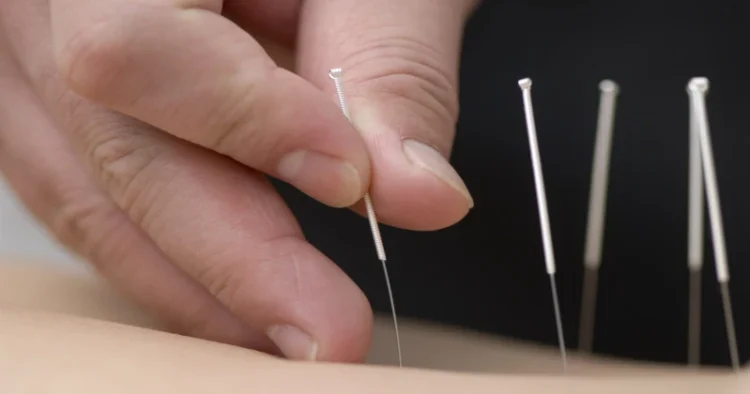Researchers investigated whether acupuncture helps relieve chest pain caused by stable angina. Stable angina is a disorder that affects millions of Americans and is defined as predictable chest discomfort with exertion or when under mental or emotional stress.
A substantial amount of research has proven that acupuncture can help with a variety of chronic pain conditions. However, little is known about its effect on ischemia pain, which occurs when the heart does not receive enough oxygen, as in stable angina.
Principal investigators Judith Schlaeger, associate professor in the College of Nursing, and Holli DeVon, professor emeritus in the College of Nursing who is also a professor and the Audrienne Endowed Chair in Research at UCLA, will lead the two-site study. Dr Joan Briller, cardiologist and clinical medicine professor at the College of Medicine, is a co-investigator and subject matter expert.
In a previous pilot study, the team found that acupuncture reduced pain and improved quality of life for participants.
Chest pain from stable angina is often the result of cholesterol buildup in the arteries that reduces blood flow to the heart, Briller explained. But many people with stable angina have it for other reasons, such as when the tiny arteries that deliver blood to tissues malfunction and don’t let enough oxygen through. Treating these patients with therapies that are designed to reduce cholesterol-caused blockages often doesn’t work, leaving them with what can be debilitating flare-ups of chest pain.
“The idea of using acupuncture is a really novel one and it would be terrific if it works,” Briller said.
Chest pain from angina can significantly reduce a person’s quality of life, causing them to avoid physical activity or potentially stressful situations.
“Having chronic pain, no matter what the cause is, is debilitating and exhausting,” said DeVon, who will be recruiting patients at UCLA in addition to those recruited by Briller and Schlaeger at UIC. “I’m excited to be offering an alternative to patients who have not gotten complete pain relief from medication.”
Schlaeger points out that there is a huge disparity among those who have access to acupuncture in this country, both because acupuncturists tend to practice in wealthier neighbourhoods and because the treatment can be costly. Study participants will largely come from medically underrepresented groups who will have access to acupuncture for the first time, as was the case in the pilot study.
“Participants in the pilot were really delighted to be offered an intervention that they’ve heard about but had been beyond their reach,” Schlaeger said.
(with inputs from ANI)



















Comments